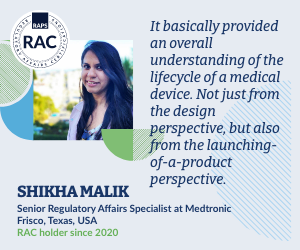ICH releases draft guideline proposing harmonized bioequivalence testing
![]() Regulatory News | 03 January 2023 |
Regulatory News | 03 January 2023 |
The International Council for Harmonisation (ICH) last month released a draft M13A guideline which proposes harmonized bioequivalence (BE) testing of new orally administered immediate-release (IR) solid oral drugs and assessing BE after post-approval changes.
The guideline covers the scientific and technical aspects of study designs used to support BE assessments; it does not address pharmacokinetic (PK) study designs or data analytics to support BE assessments. The guideline was released for public consultation on 20 December.
Harmonizing BE study design “would benefit both innovator and generic product developers as the same scientific approach could be followed in multiple jurisdictions, potentially reducing duplicative work,” according to an ICH concept paper released in 2020. “Patients would also benefit as harmonisation would help regulatory agencies in the timely authorisation and availability of quality, safe and effective drugs based upon harmonised acceptance criteria.”
While most regulators have BE guidelines in place and follow similar assessment approaches, “there remain some significant differences that hamper global harmonisation of drug development,” the paper states.
This is the first in a series of three guidelines to address BE; a forthcoming M13B guideline will describe biowaiver considerations for additional strengths not investigated in BE studies and M13C will address BE assessments for highly variable drugs.
The guideline covers BE study designs, including study population, sample sizes, comparator and test products, fasting and fed condition and moieties to be measured. For example, studies should be performed in healthy subjects, and the protocol should address inclusion and exclusion criteria. Subjects should be at least 18 years old and have a Body Mass Index (BMI) between 18.5 and 30.0 kg. Sponsors should ensure that subjects who are pregnant or lactating are excluded.
It recommends a randomized, single-dose, two-period, two-sequence crossover study design when comparing the test and reference formulations. Multiple-dose studies may be conducted if a single-dose study cannot be conducted for safety or tolerability reasons.
Batches used in pivotal BE studies “should provide a high level of assurance that the product and process will be feasible on a commercial scale.” The test product should originate from a batch of at least 1/10 of production scale or 100,000 units, whichever is greater. A full production batch is required for production batches smaller than 100,000 units. In addition, the assayed content of the test batch should not differ by more than 5% from the comparator batch.
The decision to use fasting or fed conditions depends on the dosing instructions of the comparator product and the properties of the drug substance and product formulation. The guideline states that sponsors should provide a rationale on why they are using fasting or fed studies, and if fed, the fat and calorie content. The rationale can be supported by modelling and semi-mechanistic absorption models.
To be considered statistically acceptable, studies should enroll at least 12 subjects. A test product can be deemed bioequivalent to a reference product if the “90% confidence interval for the geometric mean ratio of these PK parameters used to establish BE should lie within a range of 80.00 - 125.00%.”
ICH M13A guideline
The guideline covers the scientific and technical aspects of study designs used to support BE assessments; it does not address pharmacokinetic (PK) study designs or data analytics to support BE assessments. The guideline was released for public consultation on 20 December.
Harmonizing BE study design “would benefit both innovator and generic product developers as the same scientific approach could be followed in multiple jurisdictions, potentially reducing duplicative work,” according to an ICH concept paper released in 2020. “Patients would also benefit as harmonisation would help regulatory agencies in the timely authorisation and availability of quality, safe and effective drugs based upon harmonised acceptance criteria.”
While most regulators have BE guidelines in place and follow similar assessment approaches, “there remain some significant differences that hamper global harmonisation of drug development,” the paper states.
This is the first in a series of three guidelines to address BE; a forthcoming M13B guideline will describe biowaiver considerations for additional strengths not investigated in BE studies and M13C will address BE assessments for highly variable drugs.
The guideline covers BE study designs, including study population, sample sizes, comparator and test products, fasting and fed condition and moieties to be measured. For example, studies should be performed in healthy subjects, and the protocol should address inclusion and exclusion criteria. Subjects should be at least 18 years old and have a Body Mass Index (BMI) between 18.5 and 30.0 kg. Sponsors should ensure that subjects who are pregnant or lactating are excluded.
It recommends a randomized, single-dose, two-period, two-sequence crossover study design when comparing the test and reference formulations. Multiple-dose studies may be conducted if a single-dose study cannot be conducted for safety or tolerability reasons.
Batches used in pivotal BE studies “should provide a high level of assurance that the product and process will be feasible on a commercial scale.” The test product should originate from a batch of at least 1/10 of production scale or 100,000 units, whichever is greater. A full production batch is required for production batches smaller than 100,000 units. In addition, the assayed content of the test batch should not differ by more than 5% from the comparator batch.
The decision to use fasting or fed conditions depends on the dosing instructions of the comparator product and the properties of the drug substance and product formulation. The guideline states that sponsors should provide a rationale on why they are using fasting or fed studies, and if fed, the fat and calorie content. The rationale can be supported by modelling and semi-mechanistic absorption models.
To be considered statistically acceptable, studies should enroll at least 12 subjects. A test product can be deemed bioequivalent to a reference product if the “90% confidence interval for the geometric mean ratio of these PK parameters used to establish BE should lie within a range of 80.00 - 125.00%.”
ICH M13A guideline
© 2025 Regulatory Affairs Professionals Society.













